How Do You Get Those Big Moon Photos?
It's not Photoshop, it's not AI. The key is, you don't really make the moon look big; you make the subject next to it look small.
NIGHT PHOTOGRAPHYMOON PHOTOGRAPHY
Annette Stiers Jones
8/10/20256 min read
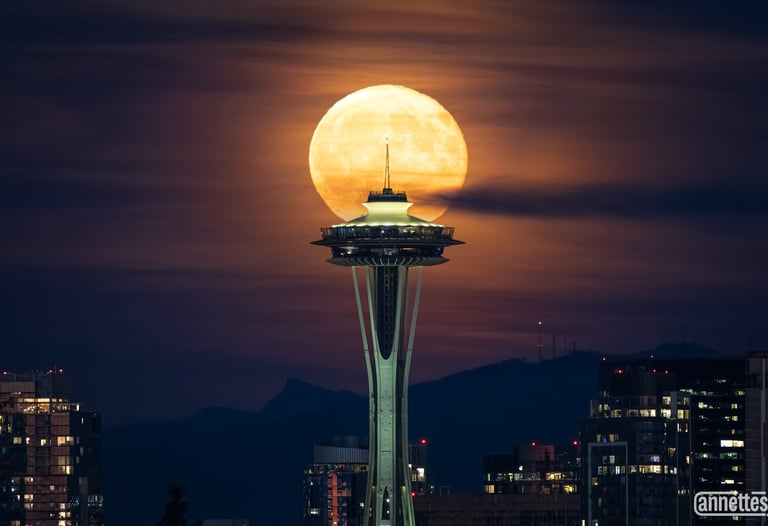

The full moon is upon us, and since it is August, it's the Sturgeon Moon. Hunting full moon shots is one of the most fun things I do as a photographer. It is one of the few things to photograph where you are very likely to meet other photographers photographing the same thing from the same location. And, it is a fun challenge. Planning the alignment, getting the exposure right, the focus right - it is a triumph when you really put it all together.
But, there is invariably someone who comes along and ruins the fun. "That's fake, that's AI, the moon is way too big." It's very frustrating when you've put in all the work and someone who really doesn't know what they are talking about makes false accusations about your work.
So, I've spent a long time thinking about how can I explain, why is the moon so "big" in these photos. I can tell you, I didn't really understand it until I started doing it! Read on to find out how it works.
Make Your Subject Small
Imagine you are in a wide open field with a barn. The moon is rising over the horizon. You are standing right next to the barn, so to your eye, the barn looks "big." Let's say you want to make the barn look small to you. How do you do that? You walk far, far away from it. The farther away you walk, the smaller the barn appears.
Now do the same thing with the moon.
The catch is, you can't. No matter how far you walk on the surface of the Earth, the relative distance you walk to the distance between Earth and moon is so small, the moon appears the same size to your eye no matter where you are.
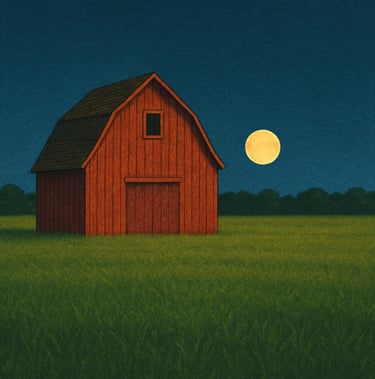

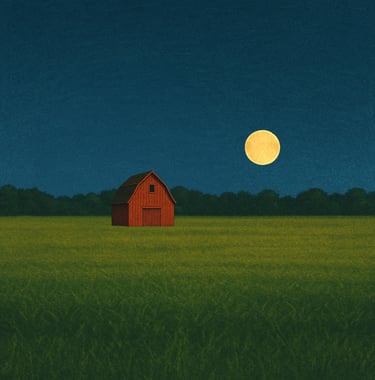

So now you are far away from the barn. The barn looks small to you, and the moon looks the size that it is. Both moon and barn look pretty small right now. Why is that? It is because you have the context of all this open space around the moon and barn. Your eye sees the whole sky, the the whole open field. This is where the telephoto lens comes in.
The telephoto lens allows you to zoom in on just the barn and the moon. It enables you to crop out all that context of open space. Without the context of the open space, you just see the barn looking small compared to the moon. The moon looks "big" because the barn is small compared to it, and you've cropped out all the context of open space around it.
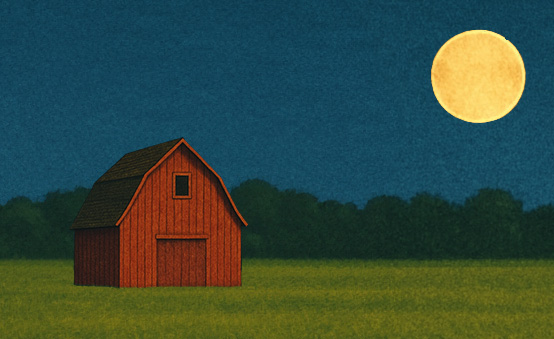

This is the same image as the far away barn; I'll I've done is crop the image. The moon now looks "big." Telephoto lenses help enable this ability to crop while preserving detail. It's essentially like shooting a photo through binoculars.
The Impact of Distance from Your Subject on Moon "Size"
Many times this phenomenon with a telephoto lens is summarized as "lens compression." This never really made a lot of sense to me, so I hope the preceding explanation makes more sense to you. While it's true you get lens compression with telephotos, in this context its the ability to help us crop in with detail that makes the optical illusion possible.
Here are some real life examples of the impact of distance from a subject on moon "size." Each photo is a different distance away from the Space Needle. The moon looks bigger the further away I get from the Space Needle. But the reality is, the moon is not bigger; the Space Needle just looks smaller because I'm further away from it. Then, when I crop in and eliminate all that context of open sky and space, your only point of reference for size is the tiny Space Needle. This makes the moon appear to be huge.
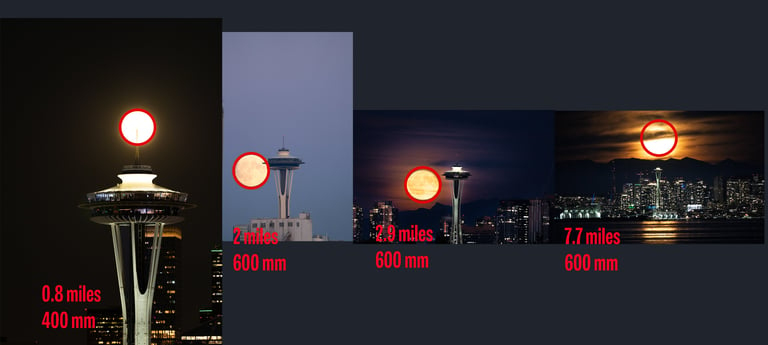

In these photos, the distance from the Space Needle gets larger from left to right. The images are uncropped and scaled so the moon is the same size in each photo. Only the 400 mm required rescaling; the 600 mm shots are all as shot from the camera. The Space Needle is getting progressively smaller in each image because I am further away. I copy/pasted a red circle of the same size into each image to demonstrate that the moon is the same size in each photo. Only the Space Needle is changing in size.
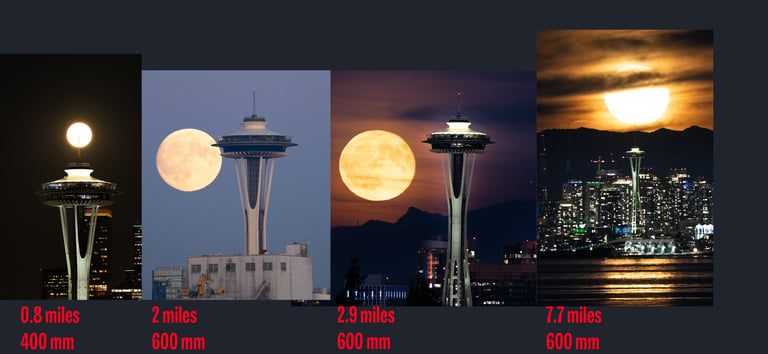

This is the same series of photos, but cropped in to remove the context of open space. The moon looks more huge when further away, but in reality it is just that the Space Needle appears "smaller".
So that's the secret, that's how it works. The only editing I do in Photoshop with these photos is to make HDR images for when it's a really dark moon rise or moon set. This means, I take two exposures: one for the really bright moon, and a second for the comparatively dark buildings. This is necessary because the camera has a lower dynamic range than our eye. This means the camera can only expose either the highlights OR shadows properly in one exposure. Here's an example:
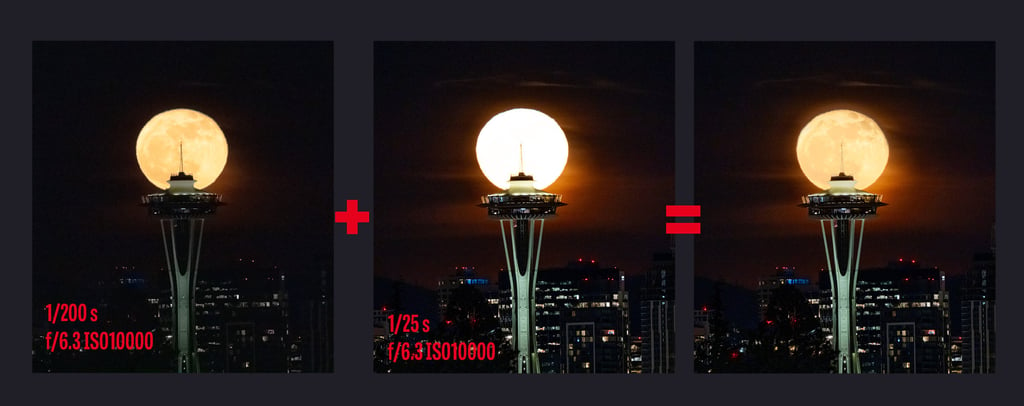

You may have seen something like this happen when you take a photo of a sunset with your smartphone. You may get either the sky exposed properly but the land is dark, or vice versa, the land is exposed properly but the sky is blown out. Some newer phones automatically do this and create an HDR image when you take the photo. That's the same thing that I am doing here. There is no rescaling or changing focal lengths (read: no making the moon bigger).
But How Do You Get it to Line Up Perfectly?
The short answer: there's an app for that. Our ancestors have been navigating by the stars for thousands of years; of course in this day and age we have an app that tells us when and where the moon will be in relation to any point on the map. I use Photopills, but there are many options available. If you'd like to read more about how to use Photopills to plan moon, sun, and even Milky Way alignments with landmarks, check out this post.
Don't Always Assume It's Fake
If you're not sure, try starting by asking the creator a question instead of lobbing an accusation. Can they tell you what lens, camera, and settings they used? Do they have a story about when was this taken? If they can give you good details and can tell you how it was taken, and if they actually take the time to explain all that to you, chances are they really took that photo. If it's fake, or even worse a stolen photo, chances are they won't answer you at all, because there is nothing to defend and they don't have a leg to stand on.
Want to see more amazing moon photos? Check out my Astrophotography Gallery.
Close to the barn, the barn looks big.
Far away from the barn, the barn looks small, but the moon looks the same size.
Contacts
annette@annettesjphoto.com
Socials
Copyright © 2023-2025 Annette Stiers Jones Photography. All rights reserved.
